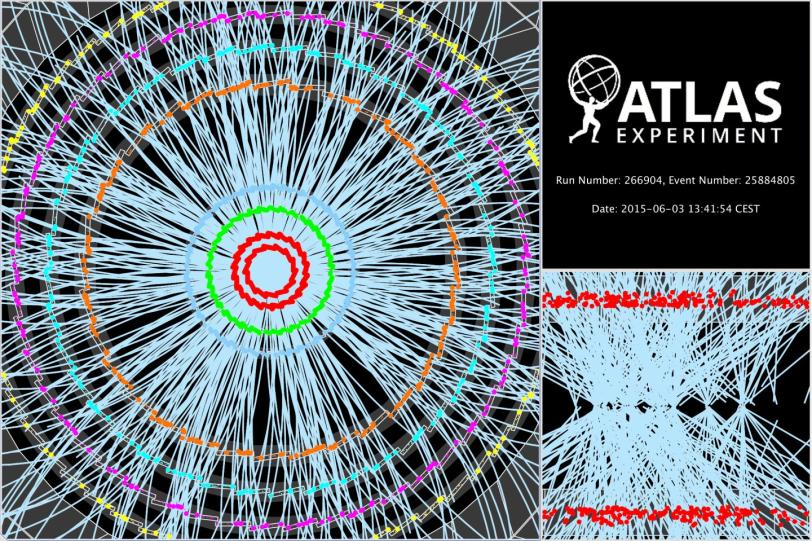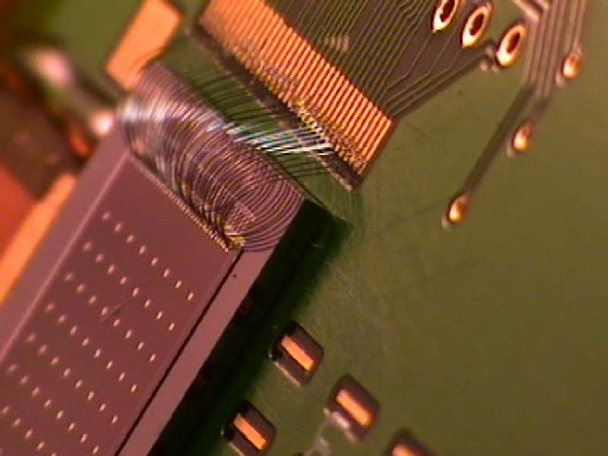A new Pixel detector
The High-Luminosity LHC will deliver 5-7 times the design luminosity of the LHC. The increase in statistics will enable us to improve the precision of our measurements, and tease out potential rare or unconventional signatures of Beyond the Standard Model physics. However, the unprecedented luminosity requires a new fully silicon tracker with high-granularity and increased radiation-hardness.
The upgraded pixel detector will feature 60 times the number channels and introduce novel silicon sensor technologies to ATLAS. Thinner pixels, advanced powering schemes as well as mechanical supports, and inclined sections result in a significantly reduced material budget, improving tracking performance with respect to the current detector.
UChicago is working with the Argonne ATLAS group to construct pixel modules for the new detector. Modules are the most basic unit of the detector, consisting of the active detecting element, a roughly 4x4 cm2 silicon sensor, and custom readout electronics. Over the next few years, we'll build and test roughly 1000 modules to be assembled into the new pixel detector.




